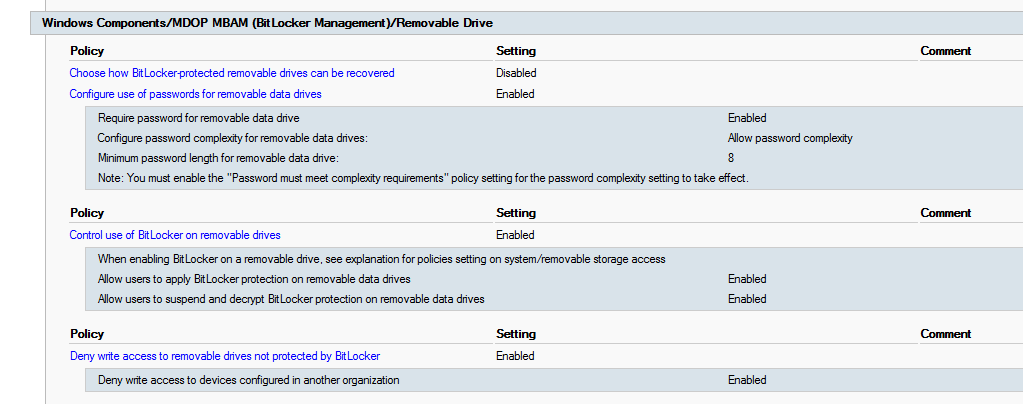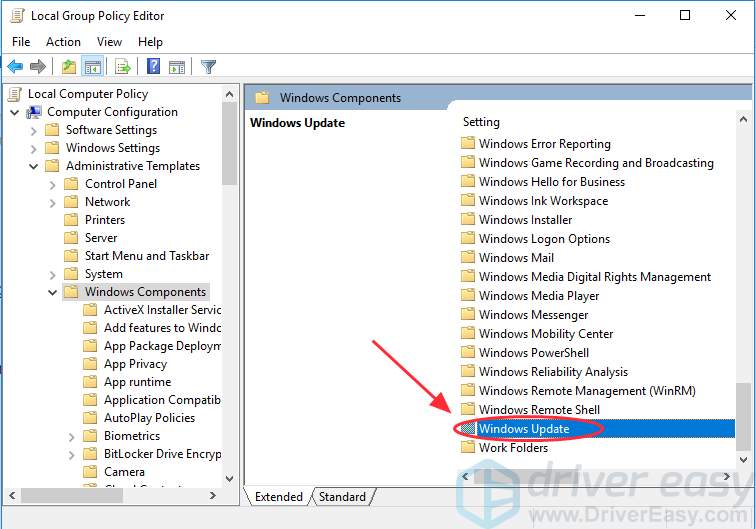Edit Group Policy Powershell Windows 10 Pro
- Edit Group Policy Powershell Windows 10 Pro Download 64 Bit
- Enable Group Policy Editor Windows 10 Home
With Group PolicyA explained how you can disable Windows Update with the Group Policy Editor (Computer Configuration - Administrative Templates - Windows Components - Windows Update).After I published the article, I learned that disabling the policy is equivalent to option 1 (Never check for updates not recommended) in previous Windows versions.Disable Automatic Updates in the Group Policy EditorThis inspired me to look for the corresponding Registry keys. For some reason, Microsoft keeps moving the location of the settings with every new Windows release.In the RegistryIn Windows 10 (final release), the Registry settings for automatic updates can be found here: HKLM:SOFTWAREPoliciesMicrosoftWindowsWindowsUpdate. However, the WindowsUpdate key will only be created after you change the settings with the Group Policy Editor, and Windows will delete the key if you set the policy to “Not Configured.”If you take a closer look at the Registry key, you will notice that it is in a Policies folder. Because Windows 10 Home doesn’t support Group Policy, these settings can’t be used for this Windows edition. Thus, you can use the procedures described here only with Windows 10 Pro and Windows 10 Enterprise.If you really need to turn off automatic updates in Windows 10 Home, you can disable the Windows Update service as in my previous post. If I learn about the Registry settings for Windows 10 Home, I will post them here.To disable Windows Update in the other Windows 10 editions, you have to set NoAutoUpdate to 1 inHKEYLOCALMACHINESOFTWAREPoliciesMicrosoftWindowsWindowsUpdateAU.If the corresponding keys don’t exist, you have to create them.You can also copy the contents of the code below to a file with the extension.reg and then double-click it.Disclaimer: I take no responsibility for what my guide will do to your computer.
These changes are not documented, and you follow my instructions at your own risk! 'NoAutoUpdate' = dword:00000001Note that new settings become active in the Windows Update app only after you check for new updates.
Even rebooting the computer does not activate the settings.The “Never check for automatic updates” setting in Windows 10As you can see in the screenshot above, you will no longer be able to change the automatic update settings in the Windows Update app. If you want to enable automatic updates again, you simply have to delete the WindowsUpdate key with its sub keys.
This is what the REG file below will do when you double-click it. -HKEYLOCALMACHINE SOFTWARE Policies Microsoft Windows WindowsUpdate With PowerShellGroup Policy offers more options than the Windows Update app offers in Windows 10. If you want to quickly switch between the different settings without navigating to the corresponding folder in the Group Policy Editor, you can run the little PowerShell script below. Make sure that you have admin rights and that you configured the PowerShell execution policy accordingly.I didn’t implement all settings that the policy offers. For instance, I didn’t include the fifth option (Allow local admin to choose setting) because it has no effect on standalone machines.I added the options for the scheduled time to configure when Windows will reboot after installing the updates, but you have to edit the values in the script if you want to use this feature. Note that these settings only have meaning if you use option 4 (Auto download and schedule the install). You can find out what the values mean if you in the Group Policy Editor.
Also note that the scheduled time only affects updates that have not yet been downloaded and installed.The script essentially mimics the actions of the Group Policy Editor when you choose between the different options or when you disable the policy. I added the values ScheduledInstallDay and ScheduledInstallTime to options 2 (Notify for download and notify for install) and 3 (Auto download and notify for install) because the Group Policy Editor does the same when you select these settings. But I guess it is not required.Note that the script always deletes all previous automatic update settings including those that you configured with the Group Policy Editor.As always, use at your own risk! Thanks, Michael!Yeah, I don't like the deferral option very much. It's only temporary and the updates WILL get installed eventually. As for the MS tool, I have that as well.
Edit Group Policy Powershell Windows 10 Pro Download 64 Bit
Unfortunately it only works AFTER an update has been installed for the first time. Can be a little inconvenient as well.I suppose minor points, but IMO are the worst things about Windows 10. I have it on three stand alone machines and am enjoying it so far (after a couple work-arounds like this one and fixing title bar colors:)). Hi there Michael, i tried many ways already and still cant manage to disable the windows update. I am using windows 10 currently. So is it rewally impossible to disable the automatic update function like in previous win 7, XP and etc??

If i disable and stop the windows update in the 'sevices' will it stop downloading the update for my win 10? And will it also stop updating my other program like flash player those things? Cause i actually just want to stop updating my win 10 only and not other program. Hope to hear from you asap ya, thanks bro. Your method used to work but not anymore. I think recent Windows updates have 'disabled' the NoAutoUpdate registry key. NoAutoUpdate is still there but it does not do anything.After setting it to '1', there is no red wordings 'Some settings are managed by your organization'.Instead, now there is a Update Settings in Settings and it still says 'Available updates will be downloaded and installed automatically, except over metered connections (where charges may apply)'.We tried on Windows 10 Professional.

Enable Group Policy Editor Windows 10 Home
I think NoAutoUpdate stopped working a few weeks ago. A classs action lawsuit needs to be filed against Microsux.We're running Winblows 10 Pro on Digital X-Ray systems and several of these reside in surgery labs.And the P.O.S. Wants to restart when the system is in use while placing pin's in hips or any other surgical procedure.Or while the surgeon is using the system it announces that a new update is available and they'll tell it later and the sucker just keeps hounding them.I've gone through the registry to limit it's intrusion and gone as far as disabling the updates in services. But Microsux finds a way around these work arounds.I'm about ready to throw in an ASA and block anything microsux on the workstation IP addresses.What a pain in the ass.

Use GpEdit.msc adjust the policy settings for the restart behavior you desire.Path: Computer ConfigurationAdministrative TemplatesWindows ComponentsWindows UpdateThe policy that should help you 'Turn off auto-restart for updates during active hours' and 'No auto-restart with logged on users for scheduled automatic updates installations'.Guessing you might not be Sys Admin for your Org if so contact the helpdesk. Your updates most likely are coming from WSUS/SCCM and the client manages most of the behavior.
The Computer object will be moved to the correct collection and the correct BranchReadinessLevel Set.





